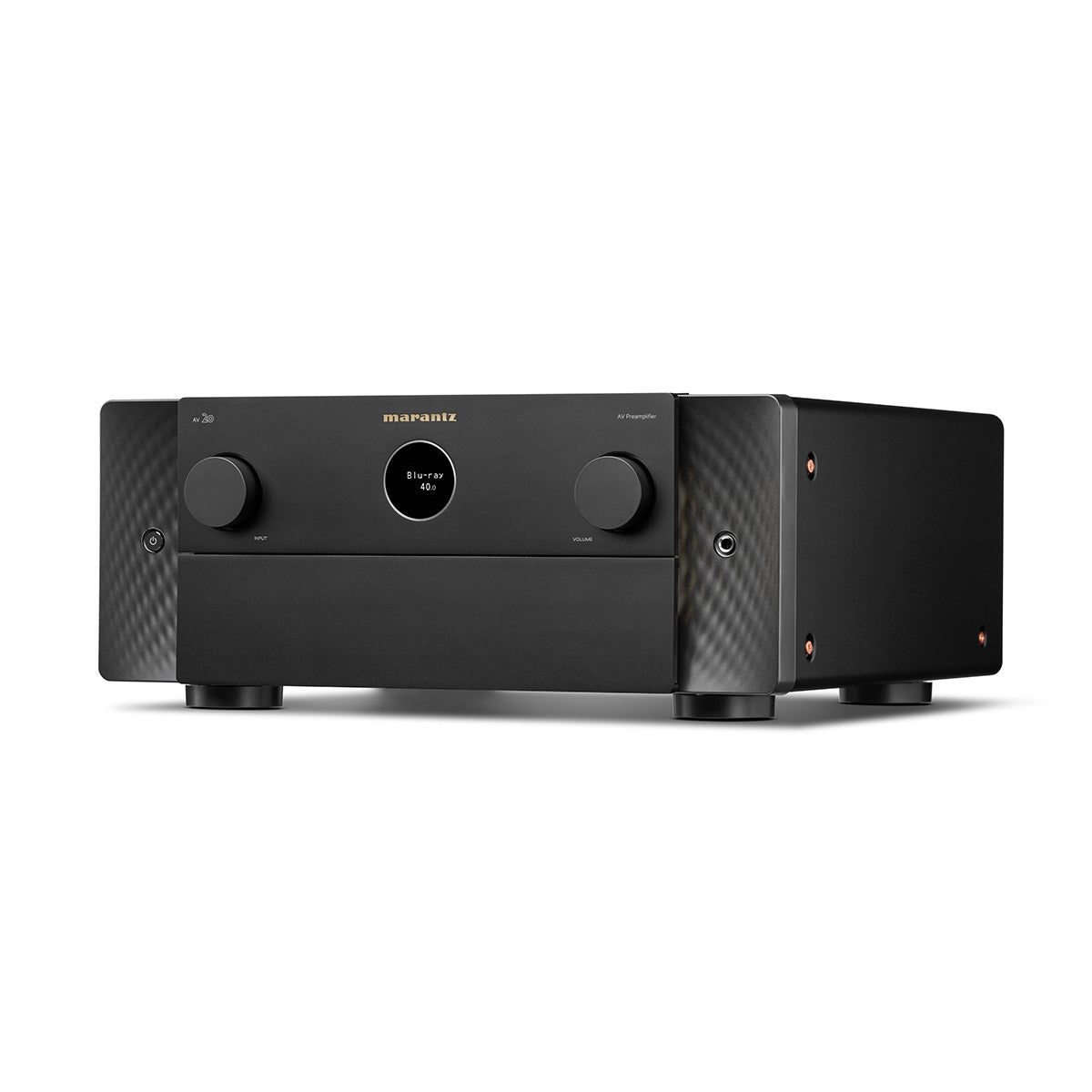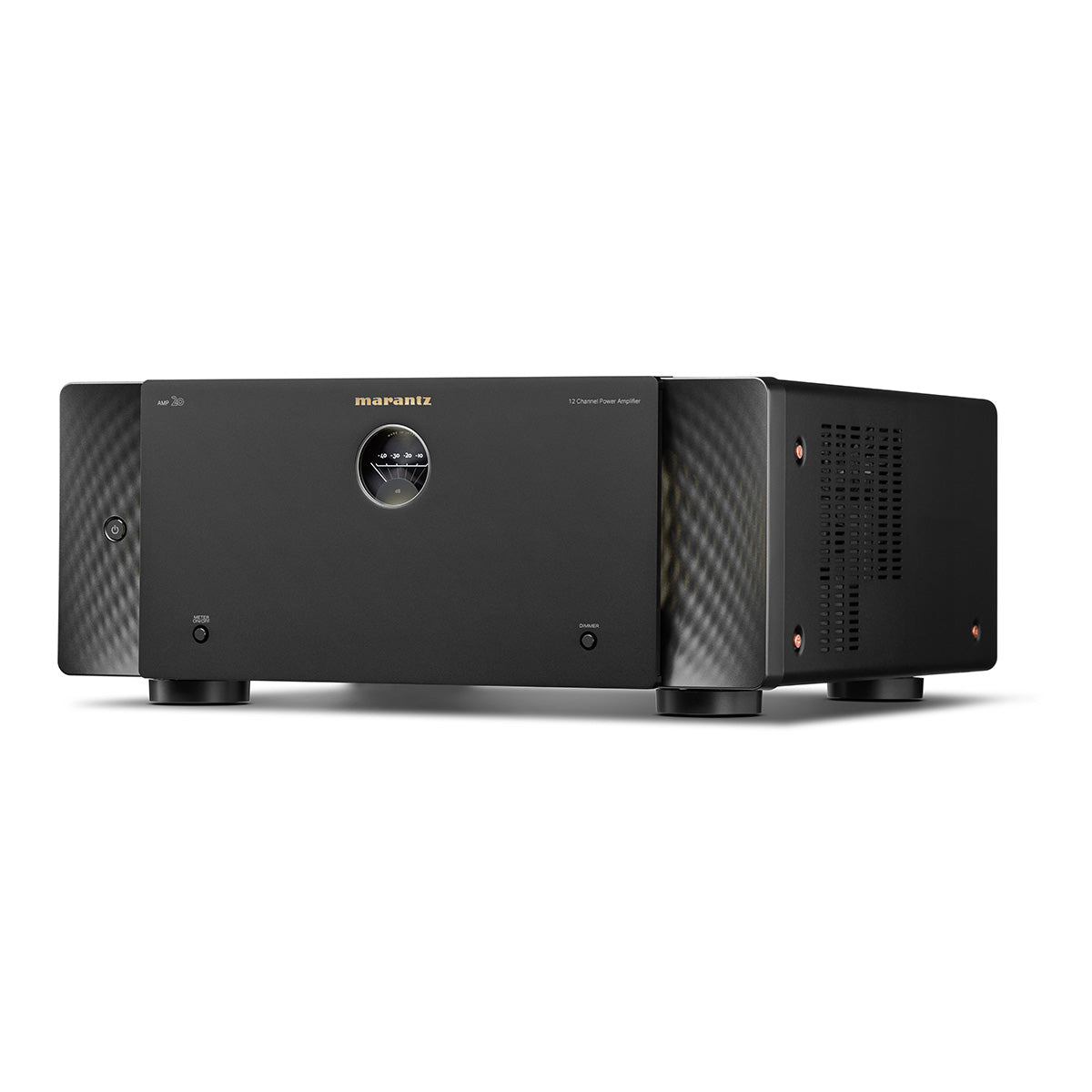Marantz AV20 and AMP20 Overview
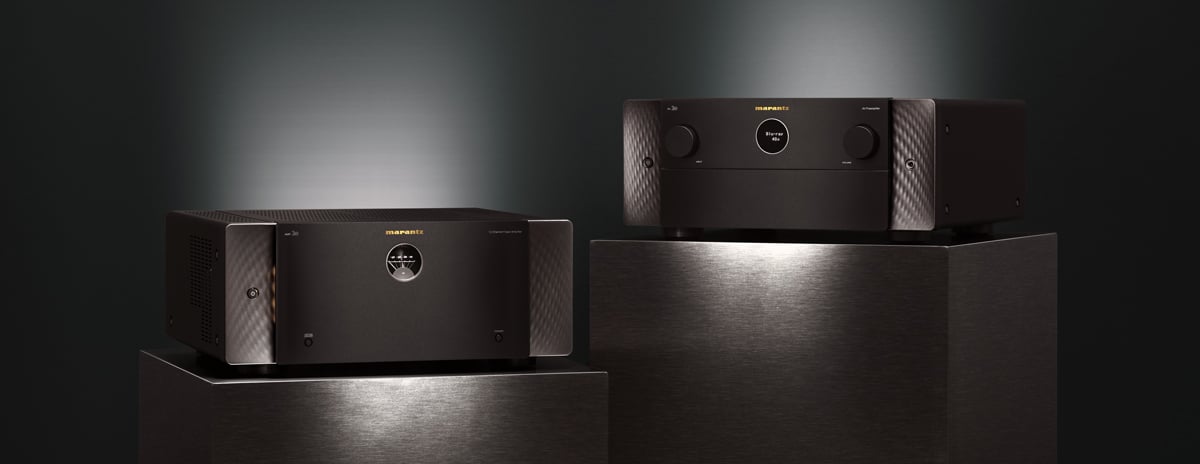


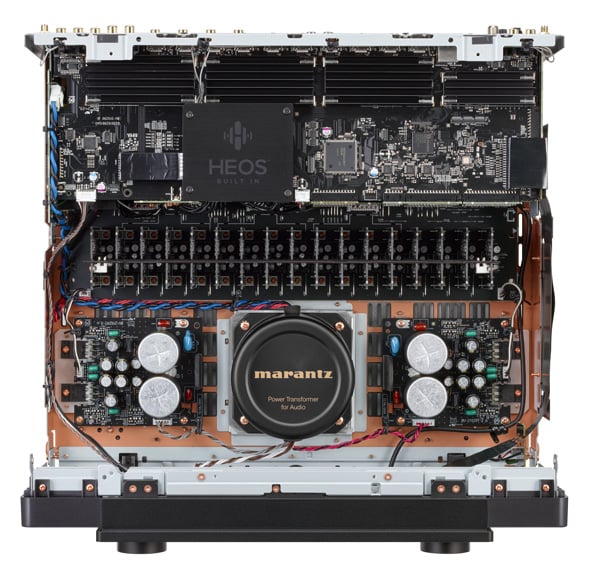
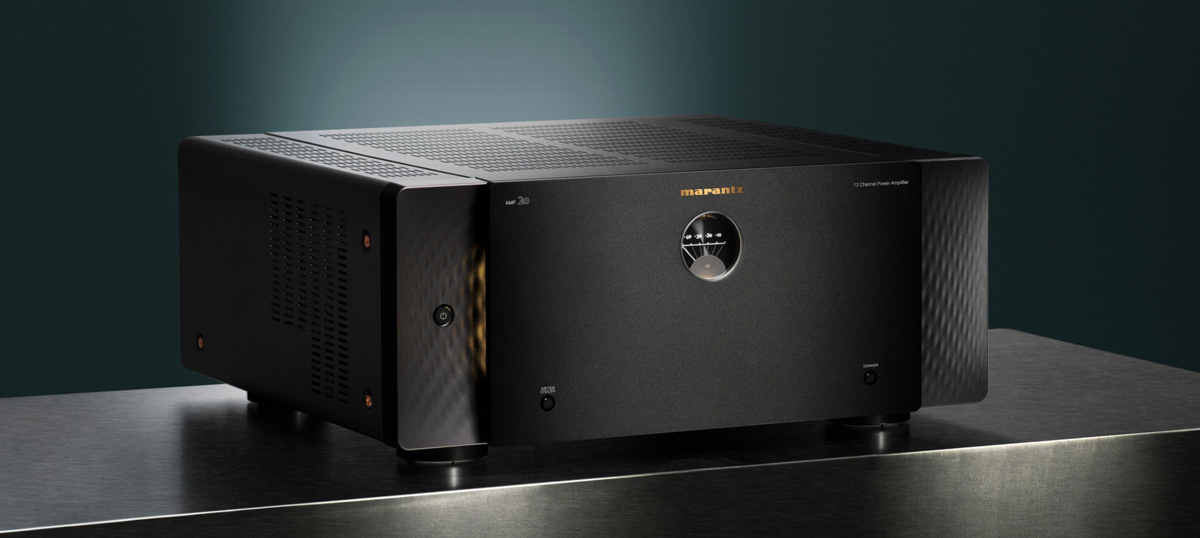
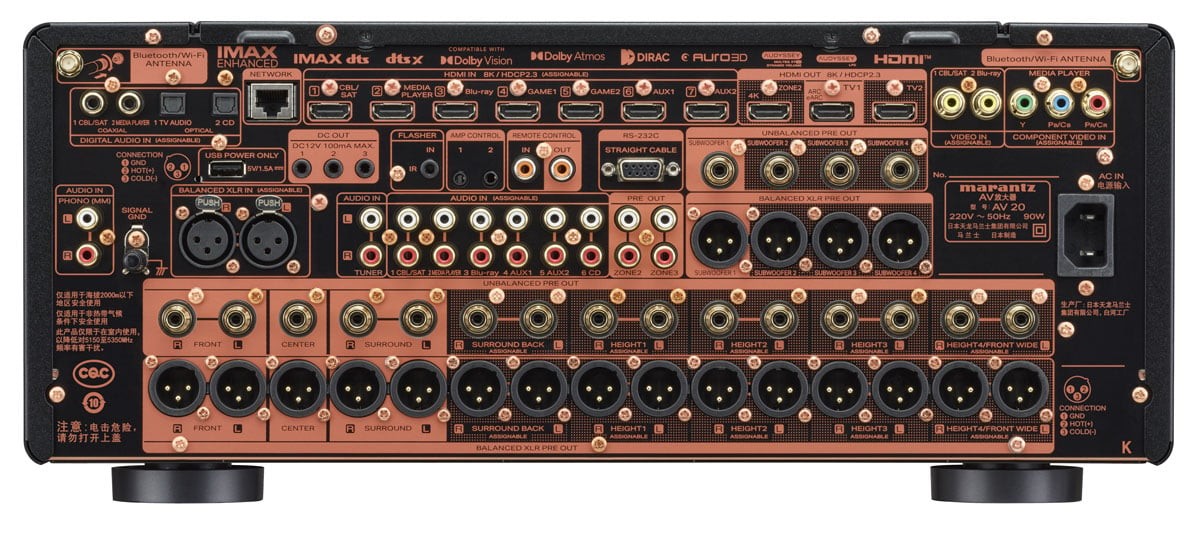
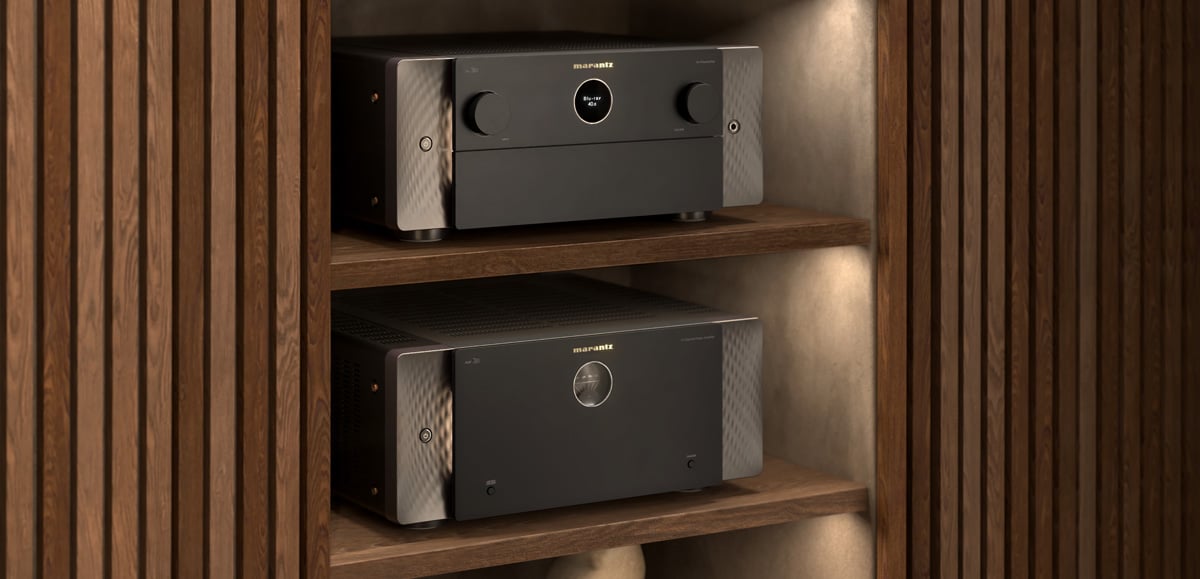

This article is all about the new AV20 home theater processor and AMP20 multichannel power amplifier from Marantz. In 2024, Marantz introduced their flagship AV10 processor and AMP10 amplifier, setting a new benchmark for performance. Now, these two new models come in at about 20% less, making them a compelling option for many users. In this overview, we’ll take a closer look at how the AV20 and AMP20 stack up against the best that Marantz has to offer and help you determine if one or both could be a great fit for your home theater.

As many of you may already know, Marantz was founded by Saul Marantz in the 1950s and has built a reputation for producing some of the most beloved audio gear in the world. Today, vintage Marantz equipment still commands high prices on the used market. To ensure the brand’s signature sound continued, Marantz created the position of Sound Masters. These engineers are specifically trained to identify and refine the classic Marantz sound. Their role is to evaluate the sound of prototypes and adjust parts and circuitry to maintain the audio quality that has defined Marantz for decades.
Like the AV10 and AMP10, the AV20 and AMP20 are produced in the Shirakawa Marantz factory in Japan. One really cool part about this factory is that they are fully vertically integrated, meaning everything from concept to design to prototyping to full production is done at this facility. This enables the engineers to interact with each other in a bespoke-like environment to really put passion into building the products coming out of this factory. We can just imagine the conversations between the Sound Masters and design engineers as they hash out ways to make their gear sound the best. It almost harkens back to the days when Saul Marantz made everything at his factory in New York. Also, almost everything made in the Shirakawa factory has a full five-year parts and labor warranty, including these two new models.

Marantz really stepped things up when they introduced the AV10 with 15.4 channels of processing on board. We loved the 4 independent subwoofer channels, along with enough channels for high channel count home theaters. Ever since their first processor, the AV500 in the early days of home theater back in the 1990s, Marantz home theater gear has always had the latest features and plenty of input flexibility.
The new AV20 is no different and actually is pretty darn close to the AV10. The channel count is slightly less at 13, but it still has four independent subwoofer channels. This would give you plenty of channels for a multi row home theater with the ability to have your 3 main front channels, 1 set of front wide, a set of main surround channels, 1 pair of back channels, and 4 height channels for a total of 13, plus up to 4 subwoofers you can calibrate individually. The AV20 even has a newer HDMI board than the AV10, with all of the inputs supporting 8K 40g. It also includes AMD’s Free Sync, which is a branded version of VRR.
Immersive surround support is included for just about everything with Dolby Atmos, DTS:X, IMAX Enhanced Audio, 360 Reality Audio, and even Auro 3D! There are 7 HDMI inputs with 3 outputs. You get one moving magnet phono input, 2 Toslink and 2 coax digital inputs, and for those of you with older video sources, you’ll even find 2 composite video inputs and one component video input. Both of these offer upscaling to the HDMI outs, which means you can still hook up that legacy Laserdisc or DVD player if you still have one!

Plus, like all Marantz gear, Heos streaming is built in, as is Bluetooth with retransmit, and it is Roon Ready. We were also really pleased to see that Marantz kept the balanced audio connections along with RCA outputs for all of the channels. And, like the AV10, you get an additional 2 zones of preamp outs for other rooms in your home.
Room correction comes standard with Audyssey MultiEQ XT32. You also get Dirac Live capability with an optional purchase of the Dirac software. While we are big fans of Dirac and do wish Marantz would include these, Audyssey is far easier to use for most people and has target curves, so it is no slouch. It does an excellent job of fixing room issues, especially if you do not have the patience to run Dirac.
Every time we set up a Marantz, we really appreciate how easy they have made it for someone just getting into this. Their own screen and guided setup menu are incredibly well thought out and guide you through the process step by step. Even if you do not fully understand the naming method for all of the various effects channels, Marantz gives you clear visual guidance so you can easily match up the speakers you have and where they are placed to the correct type of assignment. This is not just in the AV20 but all current Marantz products.
We do have one nitpick. We wish they made it a bit easier to get creative with channel assignment. With this many channels, it’d be great to assign more than one pair of surround speakers for those multi-row theaters that a lot of people have. We often see larger rooms using two or more pairs of main surround speakers, and while the typical way to do that is with splitters, which don’t allow for individual fine-tuning, there is actually a workaround here. If you go into the Amp Assign menu and select “Custom,” you can use the free assign feature to double up a surround channel. For example, in a 7.2.4 layout, you can assign the "Surround" channel to both the "SURROUND" and "HEIGHT 3" preouts. It’s a little tricky to set up, but it does give you the ability to run two pairs of surround speakers. Still, we’d love to see a more straightforward way to manage that kind of configuration.
It is pretty cool how they give you a web interface that you can easily access by typing in the assigned IP address into a browser. If you know what you’re doing, this is much faster, though it doesn’t include the self-guided portion like the on-screen version. Another great thing is you can set up your two-channel music playback to have different crossovers than for theater or even make them full range, which many audiophiles will appreciate. The two speaker presets are also especially useful. You could have one for a small group and another where you measured all of your seats to average things out for a big crowd, or even use one preset for Audyssey and another for Dirac, allowing you to compare the two. Marantz makes it easy to switch between presets with the Smart Select function, and you can even store up to three Dirac Live filters under a single preset for more flexibility.
The Marantz AV20 looks pretty similar to the AV10 on the inside, and they even share the exact same power transformer. The design of both is really well thought out, as they have a large, fully discrete power supply at the front of the unit to minimize noise. They laid out the audio boards for a very short signal path to improve performance. Marantz even considered the chassis in both with a super rigid construction. The AV20 is slightly less deep, which might be a factor for some people, as the AV10 at 19” deep did not fit on every shelf. The AV20 is 18”, which gives a shade more room.

So for those of you where the 13.4 channels of the AV20 are more than enough, you might wonder why you would even consider the AV10? Heck, they both use the same ESS ES9018K2M DACs with 9 in the AV20 and 10 in the AV10 for those extra two channels. So, where is the difference? Well, it comes down to sound with the extra love Maranz has given the AV10. The HDAM boards Marantz uses in the AV10 are just flat out more sophisticated. HDAM stands for Hyper Dynamic Amplifier Module. These use all discrete components and take the place of cheap op amps used by many companies. Marantz makes these in such a way that their Sound Masters can tune them by putting in better parts, and they are even tuned for the application they will be used in. They really were a brilliant idea that they developed a few years back.
There are three big differences in the boards in the AV10 over the AV20. The AV10 uses MELF thin-film resistors that are well known in the high-end audio world for better audio quality. The power supply caps used are surface mount on both, but those in the AV10 are higher capacity. Finally, the board itself is a 4 layer board with separate layers for each channel, a layer for the power supply, and one for ground. The AV20, on the other hand, separates the channels but combines the ground with both and has the power supply on one of the channels for a total of two boards. There is also a slight difference in the way the entire chassis is made for the AV10, with bigger layers for rigidity.
So when you compare the AV10 and AV20, it comes down to the AV10 being more finely tuned for better audio. In our listening, we could not really tell much difference in how immersive the effects were on one compared to the other, but it is smoother sounding overall to us. This really comes out in two-channel listening comparisons, so if you do a lot of music listening and have high-quality speakers, you will probably appreciate the extra tuning the AV10 received. Even the phono boards are better in the AV10, which might help you put off buying a separate phono preamp. However, if you are really into your vinyl or have a moving coil cartridge, we recommend moving up to a separate phono preamp.
If you want the best sound Marantz has to offer in a surround sound processor, the AV10 will be your best bet, but you can certainly save some money and space with the AV20, and for all but the pickiest listeners, it will do an outstanding job.

Comparing the AMP20 to the AMP10 is not quite as clear-cut as the processors, and will come down more to your use case. Both of these are multichannel Class D power amplifiers. The AMP10 gives you 16 channels while the AMP20 has 12 channels. Both use a toroidal power transformer and incorporate the Marantz HDAM-SA2 modules. And these are the better 4 layer boards in both. The power supply layout is well thought out, just like the processors, with great isolation, and to us, it looks like they even have the same toroidal transformer. The AMP10 has one feature in the chassis that might offer a tiny bit of audio improvement. The side panels are 2.5mm aluminum, while the AMP20 uses 1.2mm steel. So, in our opinion, you will not distinguish much of an audio difference between these two at all.
The business end of the rear panel looks pretty much identical, with the exception of more channels on the AMP10. You get the same very solid binding posts on both models. Both also have RCA and XLR inputs, which is great to see stick around on the AMP20.
Physically, in some environments, the AMP20 might have an advantage. The AMP20 tops out at 17.4 inches deep, while the AMP10 is 19.2” deep. When you take into account your connections, they will add some depth to this number, especially if you are using XLR connections, the AMP10 might be too deep for some shelves while the AMP20 saves about 2”. It's worth bearing both of these dimensions in mind when looking at either one as they are both very stout units.
Both units are rated at 200 watts per channel with one channel driven at a very low distortion number of .05%. This is at 1000hz, a very easy frequency to deal with and we wish Marantz specified these at 20Hz to 20KHz. They are impressive as the power does not drop at all with 5 channels driven at .7% distortion. 4 ohm power is nice too as it doubles down with 2 channels driven at .7% distortion.

With virtually identical boards and sound, it will come down to your use case. However, if you are a somewhat creative home theater enthusiast, you will find a couple of the features both of these share open up some very interesting possibilities. Both the AMP10 and AMP20 have what Marantz calls BTL which basically means bridged. This lets you take 2 channels on the amp and combine them into one with a doubling of your power out into 8 ohms. You simply connect your incoming channel to the odd number input of the pair you have bridged and you have doubled your power. So when you engage BTL, you are getting 400 watts. Another feature to consider is what is called Bi-Amp mode. This again takes the odd number input and sends the same signal to both channels. If your speakers are set up for bi-wiring, you could then have one channel of the amp doing the treble and the other channel doing the bass.

Let’s think about some options. Maybe you are like a lot of people and have a 9-channel system, not counting the subwoofers. We see this a lot with your main front three, main surround, rears, and one pair of height speakers. This would mean with the AMP20, you could take those extra three channels and either bridge them to send double the power to your main front three or use them in bi-amp mode, whichever of the two methods you determined worked best to your ears. And speaking of options, when you purchase from Audio Advice, you get our team of passionate home theater enthusiasts who can help you decide the best way to go.
For those of you with 11 channels, where you have the same layout as the 9-channel user but with 4 height channels, you will still have that spare channel to use to either bridge or bi-amp for your all important center channel.
And if you look at the AMP10, you are probably coming up with some creative ways to use all those extra channels. We even know of some people who have taken things to the extreme with 2 AMP10’s providing 32 channels you can configure in the best way possible for the 15.4 system using the AV10.
Now, some of you may be thinking, wait a minute, the AV20 has 13 channels plus the subs, how will the AMP20 work for me? Well, the answer is, if you max out the AV20 you will need to either move up to the AMP10 to cover all your channels, or buy a better stereo power amp for your main speakers for music listening. The separate stereo amp option would allow you to use the less expensive AMP20 for your 11 remaining channels and leave a spare to bi-amp or double the power for your center channel. This is what we recommend in most cases if you have the space as the difference in the price of these two puts you close to some good two channel power amps or even less in the case of the excellent-sounding Marantz Class AB 7025 two channel power amp.
Marantz certainly has you covered for all possibilities with these two power amps and which is best for your system might not be perfectly clear until you consider all the options they can provide. Again, our experts can help you sort out the best way to go for your immersive home theater.
In summary, we are really happy to see the new AV20 and AMP20. For a lot of Marantz fans with the AV8805 or even older 7706 you’ve got a lot of reasons to step up to the new tech to get better subwoofer control, the Dirac option, the latest HDMI, and not to mention improved audio. And for anyone looking at a high channel count surround sound processor, it is one of the more affordable options at this channel level, plus it sounds great and is super easy to set up. Like the AMP10, the AMP20 provides tons of great power all in one package with some really slick configuration options. Plus, for many of you, it might be a good excuse to move out of that cobbled together stack of power amps you are currently using to drive your multi-channel theater system.
If you have further questions, contact our experts via chat, phone, or email. Or simply visit one of our world-class showrooms to experience speakers, projectors, TVs, and everything in between for yourself before you make a purchase!
If you’re planning your home theater or media room, check out our Home Theater Design page, where we have everything Home Theater related, including our FREE Home Theater Design Tool.
When you buy from Audio Advice, you’re buying from a trusted seller since 1978. We offer Free Shipping, Lifetime Expert Support, and our Price Guarantee. We look forward to serving you!
You'll be among the first to know about product launches, exclusive online deals, and the hottest audio trends.

